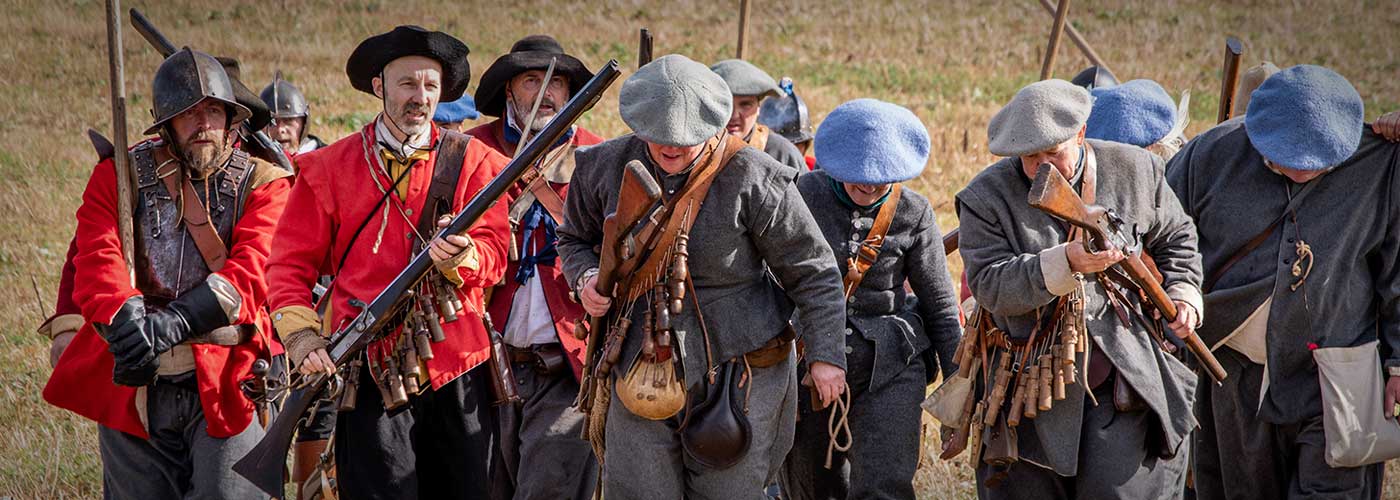Photo above used with permission by Rusty Aldwinckle www.mistresswinckle.co.uk
SIMPLE TIMELINE
September 3, 1650 – Battle of Dunbar – Scots are defeated by Cromwell’s Army
September 4, 1650 – Forced march begins with a 28 mile non-stop journey to Berwick.
September 5-10 – March continues south to Durham with stops in Morpeth, Northumberland, England and St. Nicholas Church in Newcastle-upon-Tyne.
September 11th – Scottish POWs arrive at Durham Cathedral.
September 12- October 31, 1650 – SPOWs still living in Durham Cathedral.
November 1-10, 1650 – Sent by sea via Newcastle to London.
November 11, 1650 -The SPOWs on the ship Unity departed from Gravesend, England.
Mid December 1650 – The ship Unity arrived in Boston.
“After the Battle of Dunbar, Cromwell and the Council of State had to decide how to dispose of the prisoners at [Durham, near] Newcastle. Captured soldiers traditionally would be ransomed or exchanged, but military leaders feared that healthy men would return to the Scottish army and fight again. The English also did not want to deport Scots to Europe or Ireland, for fear that they would join the armies of the Commonwealth’s enemies. The Council finally decided to send most prisoners to English colonies in the Americas – in particular, Barbados, Virginia, and Massachusetts. In early November 1650, the Council ordered Sir Arthur Haselrig, the governor at Newcastle, to deliver 150 prisoners from Dunbar to the agents of John Becx and Joshua Foote, two of the principal investors in the Company of Undertakers, bound for the Saugus ironworks in Massachusetts Bay. These men sailed to London, where they boarded the Unity under master Augustine Walker of Charlestown. The ship departed from Gravesend on 11 November 1650.
The Unity arrived in Boston in mid-December, a remarkably quick voyage for that time of year. The number of Scots who survived the voyage is unknown, as are most of their names. Of the 150 men who left London, however, the Company of Undertakers kept sixty-two for ironworks operations. Thirty-six prisoners went to Saugus, and seventeen worked for manager William Aubrey in the company’s Boston warehouse. The remaining nine intended for the ironworks were sent to the Braintree forge or sold to local farmers and artisans soon after their arrival. Fifteen Unity prisoners went to the sawmills in Maine under the management of Richard Leader, the former manager of the Saugus ironworks, and his brother George. Fifteen more went to other mills in Maine and New Hampshire. The remaining men were sold to farmers and merchants in New England. Thus of the 150 Scots sent to Massachusetts in 1650, only the thirty-six sent directly to Saugus can be positively identified as part of the Unity contingent. Many others can be tentatively associated with this group, however, based on the dates that they begin to appear in court records.” T
Hamilton, Marsha L.. Social and Economic Networks in Early Massachusetts: Atlantic Connections (University Park, Pennsylvania: The Pennsylvania State University, 2009), page 42. You can see it at “books.google.com”:
Every attempt has been made to ensure accuracy; please independently verify all data.
Published : 24 Oct 2014
Updated: 01 Nov 2016




